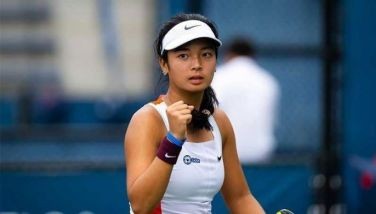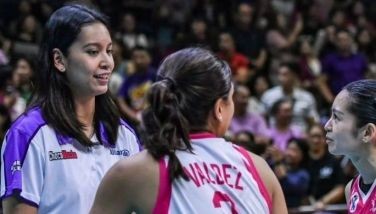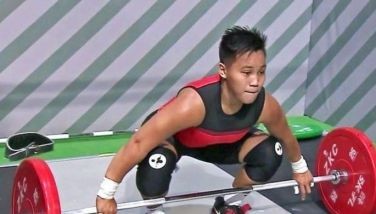FIBA: Are we good enough?
The FIBA World Cup finishes up with the US no longer the force it was in global basketball. In parallel fashion, the Philippines was blanked in the competition, and fell to last place in the tournament. These two connected developments were a long time in coming. You could see how the Americans were increasingly having problems putting their teams together. But first, let’s look back at the emergence of open basketball to root out the problems.
In the late 1980’s, the International Olympic Committee realized that its motto “citius, altius, fortius” only referred to the faster, higher and stronger of amateur sport, not necessarily the best of all. By 1988, tennis was one of the first sports declared open, allowing professionals to participate in international amateur competitions. Steffi Graf accomplished the rare Golden Slam, a Grand Slam accompanied by an Olympic gold medal. In basketball, the European teams were unaffected, since pros could simply declare themselves amateur at any time to play for their respective national teams. The US sent its usual contingent of college standouts, but this time, they were beaten, and had to content themselves with – horror of horrors – a bronze medal.
This was unacceptable to the Americans, and many NBA players openly protested. Karl Malone said it was “like watching your little brother get beaten up.” USA Basketball and the NBA then went with FIBA for open basketball. This gave birth to the historic Dream Team, 11 NBA superstars led by Magic Johnson, Larry Bird and Michael Jordan, and lone amateur Christian Laettner of Duke University. They easily dominated the Tournament of the Americas, and later the Barcelona Olympics basketball tournament. Before the age of mobile phone cameras and selfies, rival players were having their pictures taken with the NBA veterans even during games. Order was restored. America was number one again. Meanwhile, the Philippines, which was first to send an all-pro team to an international competition, faced the cold reality that China was now king of Asian basketball in the 1990 Asian Games.
What happened since 1992? First of all, the novelty wore off. NBA players inevitably saw it as a burden they didn’t need, and succeeding generations didn’t take it as seriously. Ten of the Dream Team 2 players were replaced before the Atlanta Olympics for bad behaviour just four years later. Soon, NBA players were finding reasons to decline, particularly players who had already won more than one Olympic gold. A few years ago, the recruitment was trimmed to a core of first- and second-year players, and veterans who volunteered. On the other side of the fence, more and more foreign players entered the NBA, and were no longer intimidated. They learned the American way, while the Americans never bothered to learn theirs. The league just kept bringing in more Europeans, not really bothering to break down what made them so competitive. A fatal mistake by 2019.
Sadly, the Philippines, like the Americans, was also looking the other way. Generations of coaches and players kept trying to play the game the way naturally bigger, more skilled American players did. It reflected in coaching, playing, shooting. A kid who was tall at 9 or 10 became a center who became useless when he stopped growing in high school, without the training to adapt to a smaller man’s position, The flaws would constantly be exposed against other Asian nations, but never acknowledged save by Tab Baldwin, the most recent voice in the wilderness.
As this writer has said before, the national team is not the PBA’s job, but the public constantly demands more from it, even though it has done far, far more than its share for the cause. We seem to blame those who help when it doesn’t meet our expectations. We don’t blame the system.
So let’s answer the question: are we good enough to compete in global basketball? It is not a question of desire, but rather of capability. Let’s use the criteria of size, talent, teamwork and overall preparation. And let’s try to be objective. Bear in mind that Angola, which has been playing basketball less than 30 years and has no seven-foot players, reached as high as number 11 in the world just over a decade ago.
Size. Filipino basketball players have gotten taller in the last half century, without a doubt. Players 6’8” and taller are more commonplace. And even if not all kids are discovered early enough or want to play the game, there is still a more substantial pool. However, the problem is how they are trained. Reasonably tall players do not receive the necessary training in shooting or dribbling that will help them when they face even taller opposition. Also, many college coaches do not have the patience to polish players, unless they’re foreigners just learning the game for the UAAP, NCAA and so on. Size is abundant, but only still at frontcourt positions.
- Latest
- Trending






























